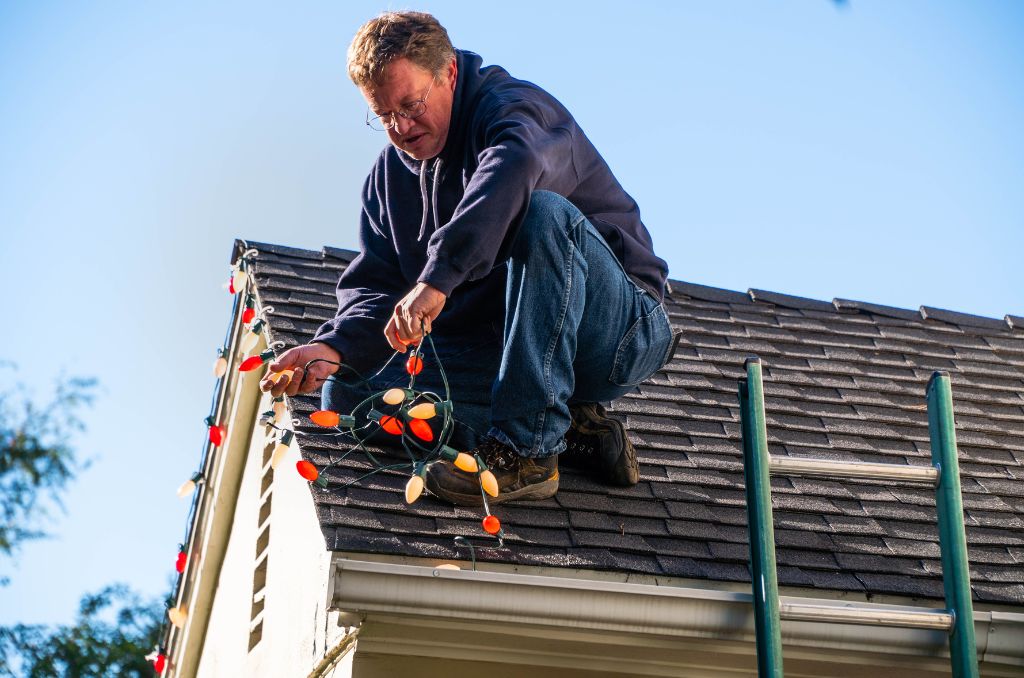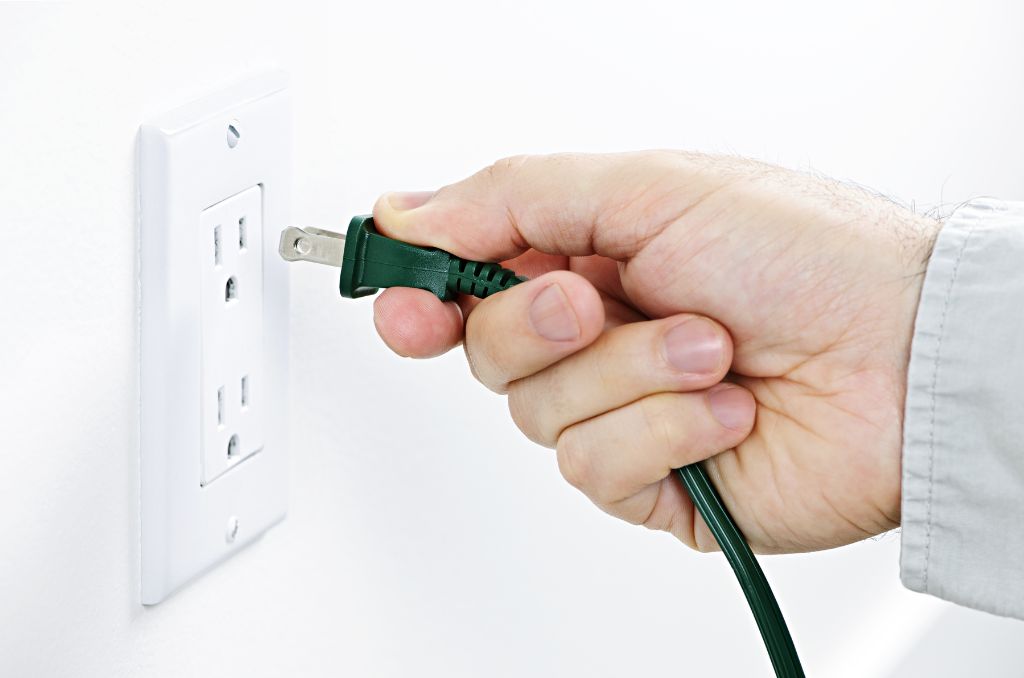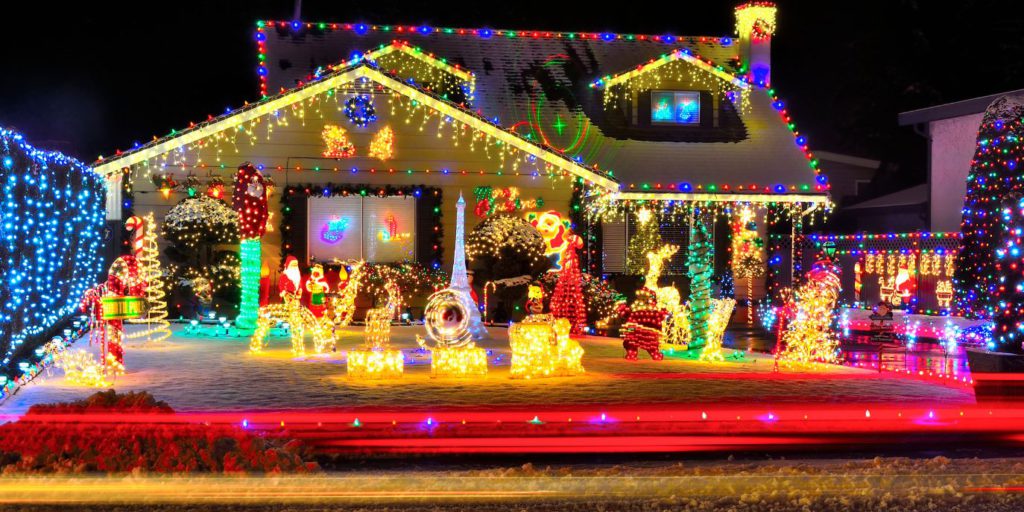The most wonderful time of the year brings joy and warmth to all as homes and businesses glow inside and out with twinkling lights illuminating the holiday spirit. Decorating with Christmas lights is a cherished tradition, but it is also important to not forget safety.
According to The American Red Cross, “one of every 22 home fires started by Christmas trees result in death.” Whether you prefer classic string lights or a large dazzling display, here are seven tips to help you prioritize Christmas light safety.
Choose Your Light Type Carefully
When purchasing Christmas lights, choose only safety-certified products. Look for labels indicating that the lights have undergone testing and are approved by recognized safety agencies.
There are different types of lights, like incandescent and LED. Keep in mind that while good-working incandescent lights don’t usually produce enough heat to be the sole cause of a fire, they are more susceptible to electrical issues that can cause overheating and lead to a fire, especially around other holiday decorations. LED lights are designed to emit less heat, reducing the risk of fire hazards. LED lights are also more energy-efficient, have a longer lifespan, and need less maintenance.
Secure Lights Properly

When installing your light displays (indoors and out), take the time to secure them safely. Lights should never be stapled or tacked to secure them. Doing so can create an electrical circuit that may generate heat and become a fire hazard.
Furthermore, when installing lights inside, it’s best to ensure installation is done correctly to avoid any chewing, choking, electrocution, or strangulation hazards for children and pets.
Electrocution hazards are also a concern outside if metal staples or tacks are used and encounter a live string of lights and touch another part of your home, such as a metal downspout or gutter. Always use designated clips and fasteners that are specially made to hang outside lights.
Don’t Mix Outdoor and Indoor Lights
Mixing indoor and outdoor lights might seem convenient, but it’s a recipe for potential hazards. Outdoor lights are designed to have an extra seal to keep moisture out and withstand weather elements, while indoor lights lack this same durability.
By keeping these lighting types separate, you ensure safety for your decorations and your home or business.
Choose the Right Outlets & Cords
When installing outdoor lights, being mindful of your setup is essential. All outdoor lighting and decorations should be plugged into ground-fault circuit interrupters (GFCIs). These specific outlets cut off electrical power when electricity comes into contact with water, reducing safety hazards. If you do not have any of these installed at your home, you can purchase portable ones for the season.
Indoor and outdoor extension cords are not created equally; using the appropriate kind is another vital part of Christmas light safety. Indoor extension cords are shorter, thinner, and provide less power, while outdoor ones are designed to have extra insulation, making them thicker and bulkier. Always use appropriately designed extension cords to minimize any potential dangers or injuries.
Don’t Overload Outlets

Trying to figure out just how many strands of lights your outlet can power might seem overwhelming. It depends on the light strands’ total wattage and how much watt capacity your outlet plugs can handle. A good rule of thumb is three strands per outlet or less to be safe.
Don’t Leave Lights Unattended or On All Night
Another way to minimize any potential light-related hazards is by making sure you never leave your lights on unattended and unplug them all at nighttime. It might not seem like a significant risk to leave them on for a few minutes while you run out, but as a safety precaution, they should always be unplugged when no one is there to keep an eye on things. If you are prone to forgetting, or it becomes a big hassle, you can buy timers and remote controls to automatically shut the lights off or enable you to turn them off at a distance.
Have Appropriate Safety Tools In Place
It is always best to be prepared for emergencies, even when you have taken precautions. If you are setting up a large commercial or residential display, having the right safety signs and tools, like fire extinguishers, is essential. Safety signs are crucial to helping first responders and employees identify the necessary safety tools if the lights are in a business, school, or other public setting. While a fire extinguisher is an excellent tool for putting out a fire, it’s less useful if people cannot locate it quickly and easily.
Here are some relevant safety solutions you should consider:
- 911 address signs– These address signs are great for emergencies. They are reflective and highly durable, meaning that first responders can easily find your home or business address.
- FDC signs– Fire department connection (FDC) signs allow fire department personnel to quickly locate a building’s water supply source in case of an emergency.
- Fire extinguisher signs– Fire extinguishers are a standard safety tool, especially in business or commercial buildings. Make sure they can be found easily in the event of a fire by using these signs.
These safety tips are invaluable to keep in mind as you brighten your home or business this season. Each step is crucial to preventing electrical mishaps or potential fire hazards, from opting for safety-certified lights and understanding their differences to meticulously securing them indoors and outdoors.
Additionally, the importance of using appropriate outlets, not overloading circuits, and never leaving lights unattended cannot be stressed enough. Having the right safety signs and tools on hand could make a significant difference in any unforeseen circumstances. Remember, while creating the magical glow of the season, prioritize safety for a joyous and secure celebration!

